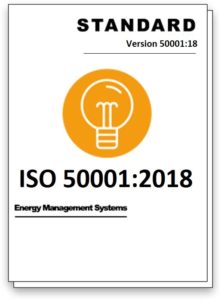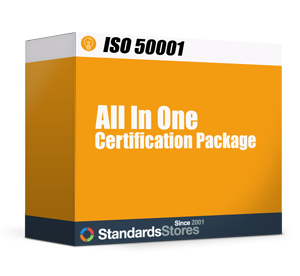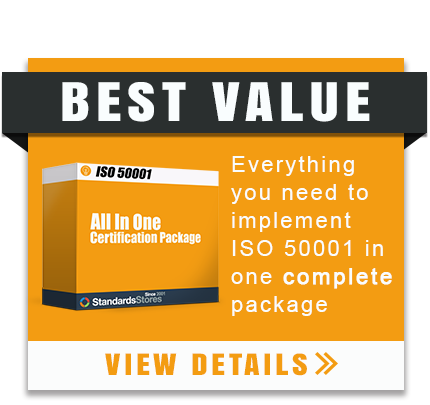What is ISO 50001:2018?
ISO 50001 is the international standard addressing the requirements for establishing, implementing, maintaining and improving an energy management system (or “EnMS”). The standard aims to help organizations continually reduce their energy use, and therefore their energy costs and their greenhouse gas emissions. The ISO 50001:2018 Energy Management Systems (EnMS) standard was developed by the International Organization for Standardization (ISO), updated from 2011. In February of 2024, ISO published ISO 50001:2018/AMD1:2024, which amends Section 4 to include climate action considerations. The purpose of implementing a standard is to allow your organization to establish a system to continually improve, and in this case, improve its energy performance. An EnMS will improve your energy efficiency, energy security, energy use and consumption.
Buy the ISO 50001:2018 Standard
The Standard:
- Is applicable to events affecting energy performance that are managed or controlled by an organization.
- Can be used independently, aligned with or integrated with other Management Systems.
- Is applicable to any organization regardless of its type, size, or the products and services it provides.
- Is applicable regardless of the quantity, use, or nature of energy consumed.
- Does not define levels of energy performance improvement to be achieved but does require demonstration of continual energy performance improvement.
ISO 50001 is an internationally recognized Energy Management System. You may want to read:
- What is an Energy Management System?
- Learn about the ISO 50001:2018 Requirements.
- Learn the Steps to ISO 50001:2018 Certification.
- ISO 50001:2018 Training reviews all the clauses of ISO 50001:2018.
- Buy The ISO 50001:2018 Standard.
Who uses ISO 50001:2018?
A variety of organizations have implemented ISO 50001. ISO 50001 is made for all organizations regardless of size, and manufacturers, corporations, utilities, energy service companies, and other organizations are using ISO 50001 to reduce costs and carbon emissions. As of 2016, 23,000 organizations achieved ISO 50001 certification and this number continues to grow. The newest version follows the same structure as ISO 9001:2015 and ISO 14001:2016, making it easier to implement more than one ISO standard into your company. The number of certifications is expected to grow as more companies integrate the standard into their company and require suppliers and partners to do the same.
Past (Obsolete) versions of ISO 50001:2018 Standards:
- What is ISO 50001:2011?
- The newest edition of ISO 50001 was published August 2018, to learn more about the changes read Transitioning from ISO 50001:2011 to ISO 50001:2018.




